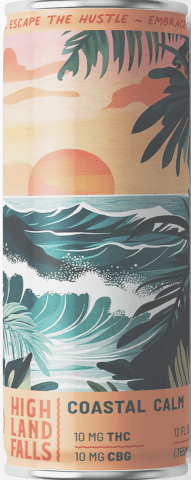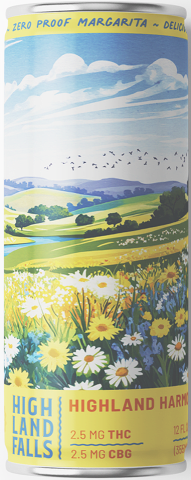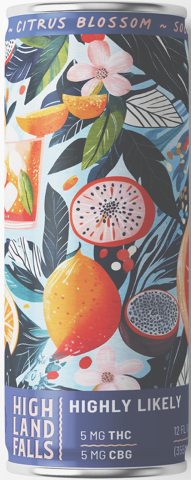Shop for Wine
Shop for Wine
No Results
Giuliano Rosati Pinot Grigio

Dan Bada & Charlie Trivinia, whose mothers emigrated to the U.S. together from Le Marches, Italy, and lived in the same house for some time. The two were childhood friends and in adulthood they decided to launch a wine import business. They work with winemakers Giuseppe and Luigi Anselmi in the Veneto to create this wine from the Anselmi’s 600-acre estate near the sea.This is traditional Pinot Grigio: stainless steel, fresh and tangy.
Type, Body & Flavor
Grand Moulin Blanc

For Chateau Grand Moulin (the big windmill, essentially), it helps that the vineyards are just above the Orbieu River, filled with small stones and gravel on top of layers of silt and clay. Grenache Blanc provides the meat, Rolle provides the charm and Roussanne adds a distinct honeysuckle note to this dry wine.
Type, Body & Flavor
Grandes Arenes Rouge

Syrah and Grenache is more or less in equal proportions here, and this exhibits what makes Costieres de Nimes an increasingly popular and important sub-region of the Rhone Valley. It benefits from the same Mediterranean sun and breezes, and the same limestone soils, as any other southern Rhone appellation. Maybe best of all, unlike so much Chateauneuf-duPape, this stuff is affordable!
Type, Body & Flavor
Granicus Red

We like to shop in the Languedoc-Roussillon; it’s a place in Mediterranean France that has been important for more than a century but, despite the noise about inexpensive Bordeaux wines, remains the place to shop for value. When they are growing on chalky-clay terroirs, and when they apply Bordeaux techniques to it (fancy stainless steel, new French oak, minute temperature control and the like), they make a fascinating wine.
Type, Body & Flavor
Guillemain Pinot Noir

Burgundy is scarcely affordable anymore and those of us who like to drink it have fewer options. So we’ve gone out into the wild to find options that please us and that, we hope, will please you too. This is lighter in style than American Pinot and built on charm and grace, not power. Since the de la Farge family are such leaders in this part of the world, yet so few know about their reds, we think we’re letting you in on a happy little secret.
Type, Body & Flavor
Guillemain Reuilly Pinot Gris

Burgundy is scarcely affordable anymore and those of us who like to drink it have fewer options. So we’ve gone out into the wild to find options that please us and that, we hope, will please you too. This is lighter in style than American Pinot and built on charm and grace, not power. Since the de la Farge family are such leaders in this part of the world, yet so few know about their reds, we think we’re letting you in on a happy little secret.
Type, Body & Flavor
Highland Falls Back Porch Bliss

4-Pack A chilled lemon iced tea sipper infused with 2.5 mg of THC and 2.5 mg of CBG for easygoing calm and comfort. We took the timeless taste of iced tea, added a splash of real lemon, and gave it a modern twist—made for sunny decks, hammock days, and long, easy evenings. Gluten-free, alcohol-free, and vegan, Back Porch Bliss is crafted with hemp-derived Delta-9 THC for a balanced, relaxing effect that won’t weigh you down. It’s classic comfort with a subtle lift—your new favorite way to relax, reconnect, and enjoy the moment.
Type, Body & Flavor
Highland Falls Coastal Calm

4-Pack Your escape-in-a-can for when life gets loud. With 10 mg of THC and 10 mg of CBG, it’s our most mellowing blend yet, made for deep relaxation and golden-hour moments. Tropical mango and bright orange come together in a juicy, citrusy swirl that brings serious beachside energy—no travel required. Gluten-free, alcohol-free, and vegan, Coastal Calm is infused with hemp-derived Delta-9 THC for a clean, balanced experience. It’s the perfect companion to help you exhale and unwind. Your coastal chill starts here.
Type, Body & Flavor
Highland Falls Highland Harmony

4-Pack A zero-proof margarita sipper infused with 2.5 mg of THC and 2.5 mg of calming CBG for smooth, mellow relaxation without the booze. We blended natural citrus flavors with a touch of real sugar to create a bright, balanced twist on the classic margarita—perfect for laid-back afternoons and unhurried evenings. Gluten-free, alcohol-free, and vegan, Highland Harmony is crafted with hemp-derived Delta-9 THC for a clean, gentle lift that brings the calm without the crash. It’s a fresh take on a familiar favorite—your new go-to for easygoing indulgence and pure tranquility.
Type, Body & Flavor
Highland Falls Highly Likely

4-Pack The sparkling social tonic that brings good vibes in every sip. With 5 mg of THC and 5 mg of CBG, it's crafted for connection, clarity, and a little extra spark. Bright pineapple, tangy citrus, and floral citrus blossom notes create a juicy, refreshing flavor that’s perfect for lively hangs or solo unwinds. Gluten-free, alcohol-free, and vegan, Highly Likely is infused with hemp-derived Delta-9 THC to gently lift your mood while CBG keeps things calm and clear. Feel-good flavor, feel-better vibes. It’s Highly Likely you’ll want another!
Type, Body & Flavor

Giuliano Rosati Pinot Grigio
Dan Bada & Charlie Trivinia, whose mothers emigrated to the U.S. together from Le Marches, Italy, and lived in the same house for some time. The two were childhood friends and in adulthood they decided to launch a wine import business. They work with winemakers Giuseppe and Luigi Anselmi in the Veneto to create this wine from the Anselmi’s 600-acre estate near the sea.This is traditional Pinot Grigio: stainless steel, fresh and tangy.
Type, Body & Flavor
Pairings & Occasions

Grand Moulin Blanc
For Chateau Grand Moulin (the big windmill, essentially), it helps that the vineyards are just above the Orbieu River, filled with small stones and gravel on top of layers of silt and clay. Grenache Blanc provides the meat, Rolle provides the charm and Roussanne adds a distinct honeysuckle note to this dry wine.
Type, Body & Flavor
Pairings & Occasions

Grandes Arenes Rouge
Syrah and Grenache is more or less in equal proportions here, and this exhibits what makes Costieres de Nimes an increasingly popular and important sub-region of the Rhone Valley. It benefits from the same Mediterranean sun and breezes, and the same limestone soils, as any other southern Rhone appellation. Maybe best of all, unlike so much Chateauneuf-duPape, this stuff is affordable!
Type, Body & Flavor
Pairings & Occasions

Granicus Red
We like to shop in the Languedoc-Roussillon; it’s a place in Mediterranean France that has been important for more than a century but, despite the noise about inexpensive Bordeaux wines, remains the place to shop for value. When they are growing on chalky-clay terroirs, and when they apply Bordeaux techniques to it (fancy stainless steel, new French oak, minute temperature control and the like), they make a fascinating wine.
Type, Body & Flavor
Pairings & Occasions

Guillemain Pinot Noir
Burgundy is scarcely affordable anymore and those of us who like to drink it have fewer options. So we’ve gone out into the wild to find options that please us and that, we hope, will please you too. This is lighter in style than American Pinot and built on charm and grace, not power. Since the de la Farge family are such leaders in this part of the world, yet so few know about their reds, we think we’re letting you in on a happy little secret.
Type, Body & Flavor
Pairings & Occasions

Guillemain Reuilly Pinot Gris
Burgundy is scarcely affordable anymore and those of us who like to drink it have fewer options. So we’ve gone out into the wild to find options that please us and that, we hope, will please you too. This is lighter in style than American Pinot and built on charm and grace, not power. Since the de la Farge family are such leaders in this part of the world, yet so few know about their reds, we think we’re letting you in on a happy little secret.
Type, Body & Flavor
Pairings & Occasions

Highland Falls Back Porch Bliss
4-Pack A chilled lemon iced tea sipper infused with 2.5 mg of THC and 2.5 mg of CBG for easygoing calm and comfort. We took the timeless taste of iced tea, added a splash of real lemon, and gave it a modern twist—made for sunny decks, hammock days, and long, easy evenings. Gluten-free, alcohol-free, and vegan, Back Porch Bliss is crafted with hemp-derived Delta-9 THC for a balanced, relaxing effect that won’t weigh you down. It’s classic comfort with a subtle lift—your new favorite way to relax, reconnect, and enjoy the moment.
Type, Body & Flavor
Pairings & Occasions

Highland Falls Coastal Calm
4-Pack Your escape-in-a-can for when life gets loud. With 10 mg of THC and 10 mg of CBG, it’s our most mellowing blend yet, made for deep relaxation and golden-hour moments. Tropical mango and bright orange come together in a juicy, citrusy swirl that brings serious beachside energy—no travel required. Gluten-free, alcohol-free, and vegan, Coastal Calm is infused with hemp-derived Delta-9 THC for a clean, balanced experience. It’s the perfect companion to help you exhale and unwind. Your coastal chill starts here.
Type, Body & Flavor
Pairings & Occasions

Highland Falls Highland Harmony
4-Pack A zero-proof margarita sipper infused with 2.5 mg of THC and 2.5 mg of calming CBG for smooth, mellow relaxation without the booze. We blended natural citrus flavors with a touch of real sugar to create a bright, balanced twist on the classic margarita—perfect for laid-back afternoons and unhurried evenings. Gluten-free, alcohol-free, and vegan, Highland Harmony is crafted with hemp-derived Delta-9 THC for a clean, gentle lift that brings the calm without the crash. It’s a fresh take on a familiar favorite—your new go-to for easygoing indulgence and pure tranquility.
Type, Body & Flavor
Pairings & Occasions

Highland Falls Highly Likely
4-Pack The sparkling social tonic that brings good vibes in every sip. With 5 mg of THC and 5 mg of CBG, it's crafted for connection, clarity, and a little extra spark. Bright pineapple, tangy citrus, and floral citrus blossom notes create a juicy, refreshing flavor that’s perfect for lively hangs or solo unwinds. Gluten-free, alcohol-free, and vegan, Highly Likely is infused with hemp-derived Delta-9 THC to gently lift your mood while CBG keeps things calm and clear. Feel-good flavor, feel-better vibes. It’s Highly Likely you’ll want another!
Type, Body & Flavor
Pairings & Occasions
